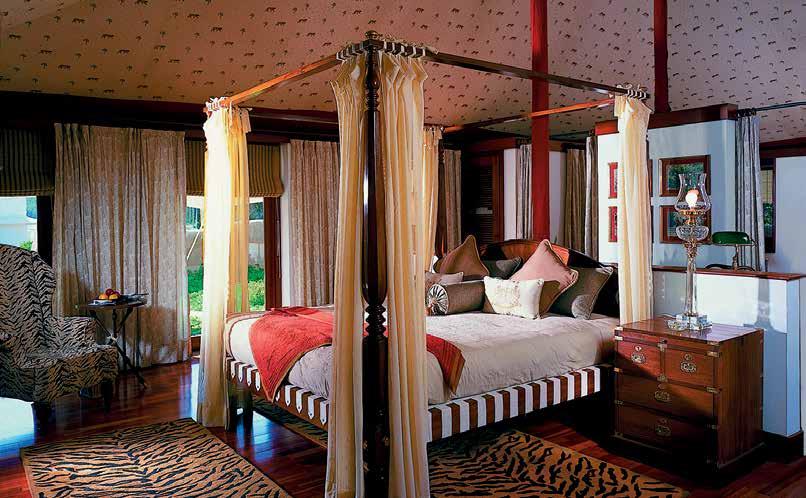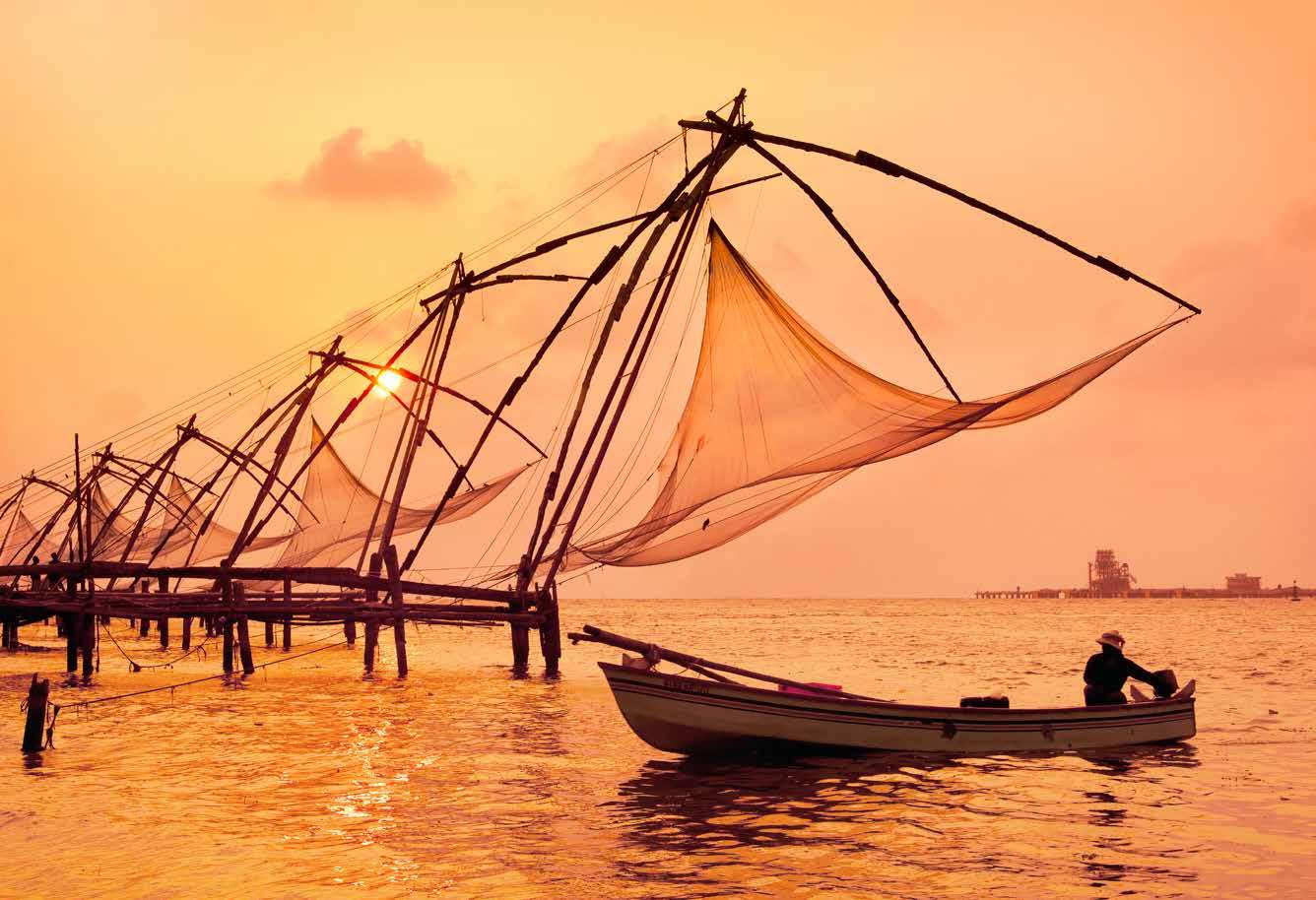
7 minute read
The Micato Difference in India
THE KERALA BACKWATERS ABOARD THE OBEROI VRINDA
5 days from Delhi or Mumbai
Advertisement
Houseboating on the serene Backwaters of the Malabar Coast regularly pops up on Top 10 Things You Should Do lists. A source of much Indian pride, the Backwaters are a world-unique watery ecosystem of palm-fringed rice paddies, small villages, and lovely lagoons, a meeting of the fresh waters of 38 rivers as they meander westward to the sea. We wend these waters aboard the intimately luxurious and delightful, eight-cabin Oberoi Vrinda, inspirationally designed proof that Oberoi excels on water, as on land. Our days are active—according to our tastes— and our nights are graced with cultural performances and Vrinda’s much-praised, resoundingly fresh and imaginative dinners.
day 1 Spread across palm-covered islands and headlands, Cochin—now usually known as Kochi—is beloved for its palmy scenery, its location near the famous Backwaters, and its unique history of foreign influence, reflected in an intriguing variety of architectural styles—fine colonial houses built by wealthy British traders, Dutch cottages with split farmhouse doors, and narrow streets where homes hide behind yellow walls. We’ll have a chance to stroll in the town before our restful overnight in sea-view rooms at the Taj Malabar Resort & Spa, beautifully set on Willingdon Island, with a magnificent view of Cochin Harbour. days 2–4 After boarding Vrinda at Alleppey, about an hour and a half drive from Cochin, we begin three days of exploration (and relaxation). We’ll lunch aboard Vrinda and sail to Vembanad Lake for a sunset dinner and an evening Kathakali dance performance, which celebrates stories from the Mahabharata and the Ramayana, the Hindu epics that seem to be in every Indian heartbeat, past and present. We’ll board a traditional rice boat and wend smaller waterways, stopping for a visit to the ruins of a thousand-year-old temple of the Lord Buddha (seen by Hindus as the ninth incarnation of Vishnu) and St. Mary’s Church, established three centuries ago by Kerala’s St. Thomas Christians, who trace their lineage back to Thomas the Apostle, two millennia ago. After our customarily grand dinners aboard, we’ll enjoy more performances: Vrinda Vadiyam, a musical fusion of classical Kerala instruments and the gorgeously costumed Mohiniyattam, Dance of the Enchantress, a sensuous classic dance form. day 5 We’ll drive to Cochin, fly to Mumbai, and enjoy dinner and use of a day room at the Leela Mumbai, tranquilly set in the heart of the city’s commercial district on eleven acres of ornate gardens and cascading waterfalls, a fine place to dally before our late-night international flights.
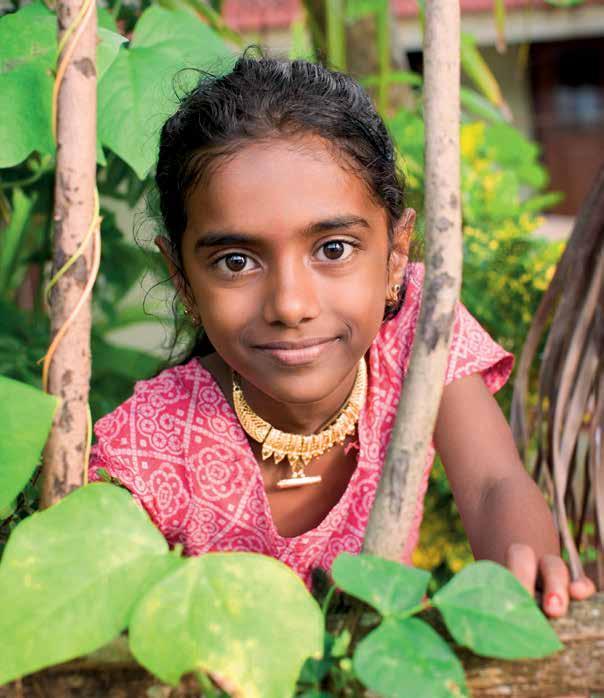
Tariff 2023 | Land arrangements, per person Double Occupancy Single Supplement Internal Flights Delhi / Cochin / Mumbai or Mumbai / Cochin / Mumbai from $2,850 1,650 1,050
OPPOSITE PAGE, TOP Chinese fishing nets at the harbour, Cochin OPPOSITE PAGE, BOTTOM A young southern Indian lady BELOW The lush Kerala Backwaters. A fine, pacific place for a final paean to India, this one from Michael Wood in his lovely book India: “History is full of empires of the sword, but India alone created an empire of the spirit.” FOLLOWING PAGE Tiger’s Nest – Paro, Bhutan
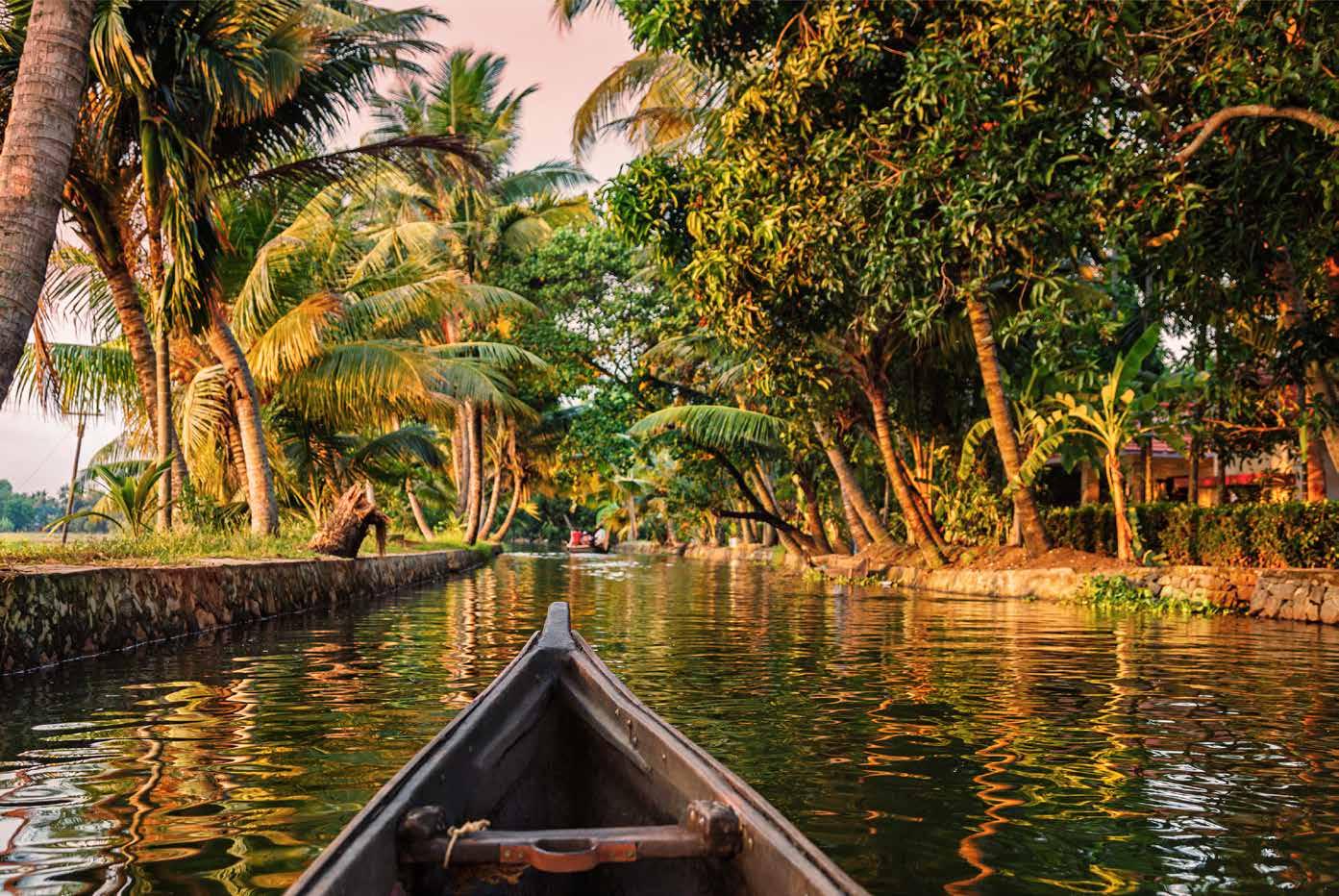
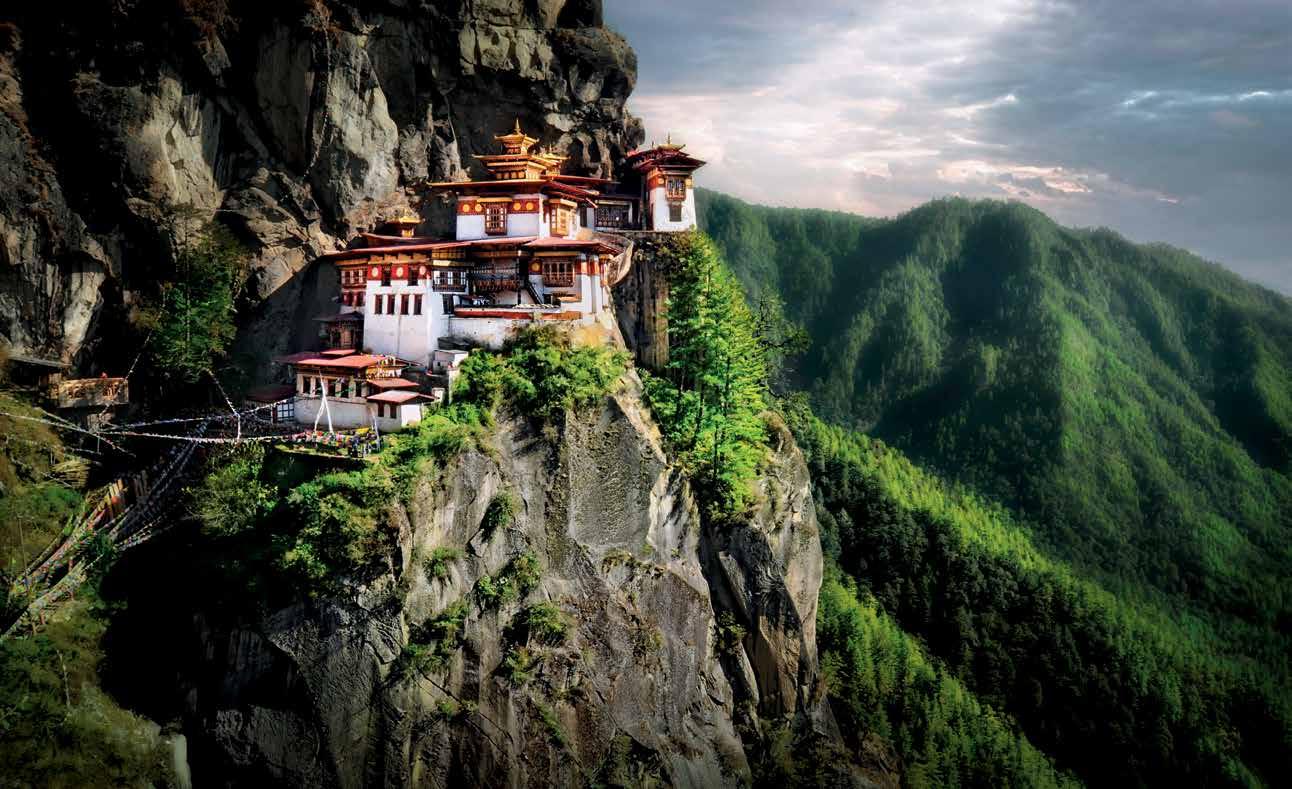
THE KINGDOM OF BHUTAN
8 days from Delhi or Mumbai
“When it comes to lovely countries,” Micato’s old friend Seamus O’Banion once wrote, “Bhutan is a country more unlike any other country than any other country.” To wit: It has wisely and successfully avoided the mass tourism that would erode its unique, vibrantly intact culture. It is endlessly lovely: its Himalayan foothill air is clear, its environment untrammeled, its countrysides and little towns idyllic. And as the world’s only Buddhist monarchy, its program of Gross National Happiness is a moral beacon. In short, Bhutan gets it right. Aman, one of the world’s most luxe hoteliers, is beautifully in synch with the kingdom’s thoughtful ways; we’ll be ensconced in three Aman properties: in the capital, Thimphu; in the historic old capital of Punakha; and in the serene Paro Valley.
days 1 & 2 We fly from Delhi to Paro, and drive for about an hour and a half to the Dragon Kingdom’s capital, Thimphu. We’ll explore Thimphu’s chortens, dzongs, lhakhangs, and museums, get to know its gracious people, and savour Aman’s many amenities.
days 3 & 4 We make a beautiful up-and-down drive to Punakha, until the mid-1950s the country’s capital, and still the winter residence of the Je Khenpo, Bhutan’s chief religious figure. Set in a valley at the relatively low elevation of 4,000 feet (Thimphu is more than 3,000 feet higher), Punakha’s farmlands are bountiful and beautiful. We’ll visit one of Bhutan’s architectural gems, the fortress-monastery Punakha Dzong, and head out to a small, pacific village. days 5–7 The Paro Valley encapsulates Bhutan’s charms: lush green fields, forested hillsides, a treasured history, and a rare sense of well-being. We’ll tour Paro Dzong, roam the heartliftingly charming little town below our lovely Amankora Paro, and visit the famous Taktsang Lhakhang, the Tiger’s Nest, an archetypal mountain aerie that symbolizes the coming of the Buddha dharma to Bhutan (see picture above).
day 8 We fly back to day rooms in Delhi before flights homeward.
Tariff 2023 | Land arrangements, per person Double Occupancy Single Supplement International Flights: Delhi* / Paro* / Delhi* or Mumbai* / Delhi* / Paro* / Delhi* *Denotes business class when available from $9,750 6,150
2,000
THE HOLY CITY OF VARANASI AND THE RIVER GANGES
3 days from Delhi
If a country can have a soul, India’s is here, in this astonishing city on the banks of the sacred river Ganges. Varanasi is a nexus of Hinduism, simultaneously a religion and an everyday way of life. Indelible is the experience of a slow, misty morning boat ride along the Ganges ghats, thronged by women in pink saris, businessmen in grey suits, skittering children, old beggars, and Brahmin grandees doing intent puja in the holiest waters in all creation.
days 1–3 We fly from Delhi to Varanasi, one of a handful of cities with a plausible claim to being the world’s oldest (Mark Twain said that it’s “older than history, older than tradition, older even than legend”). What’s certain is that no other place on the planet can compare with Varanasi’s ceaseless, manythousand-year traditions and the up-to-dateness with which it follows those traditions. Over on page 32 we try to describe Varanasi’s sheer liveliness and spiritual bustle, its air of antiquity mixed matter-of-factly with modern life. It’s a very Indian phenomenon, this easy communication of past and present, and nowhere is this unique time warping more dramatic than in Varanasi. We’ll visit the holy Ganges in morning and evening, among pilgrims from all over the subcontinent and the world. And we’ll visit the city’s Monkey Temple. On Day 3 we’ll visit Sarnath, whose lapidary museum celebrates the site where Gautama Buddha first enunciated the Four Noble Truths after his enlightenment down the road at Bodh Gaya, then return to Delhi and day rooms in the Oberoi Gurgaon before our flights homeward.
Tariff 2023 | Land arrangements, per person Double Occupancy Single Supplement Internal Flights: Delhi* / Varanasi* / Delhi* * Denotes business class when available from $2,550 450 900
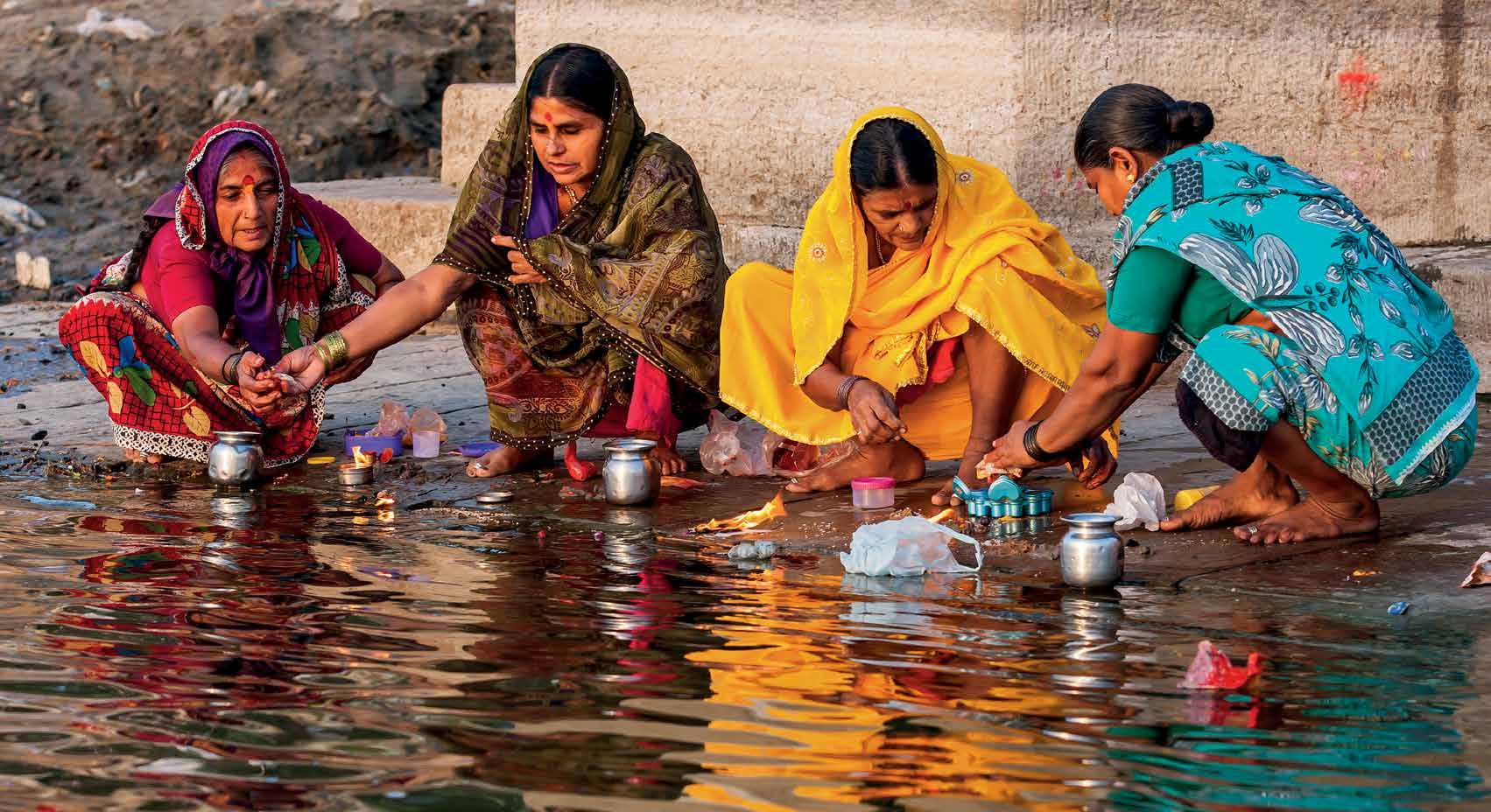

Standards of the World
The Indians are masters at creating reposeful retreats. That mastery is embodied in the thoughtfully luxurious, soothingly beautiful hotels we choose for our Classic Indian Journeys (and recommend for our private Custom Journeys). These are some of the finest hotels on the planet—as magnificent as the varied sites we visit—and Micato has long and fruitful relationships with them all.
U maid Bhawan Palace
jodhpur
The fabulously palatial Umaid Bhawan is still the home of Jodhpur’s erstwhile royals. As Micato’s Executive Director Joy Phelan-Pinto says, “Being a guest at the Umaid Bhawan isn’t like staying in a palace hotel, it’s like staying in a real palace as the guest of the royal family, surrounded by their books in the library, paintings on the wall, and stunning original furniture.”
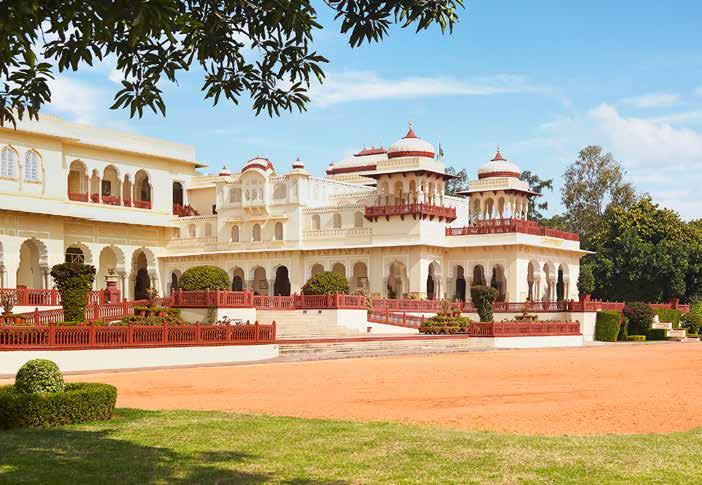
Rambagh Palace
R ambagh Palace
jaipur
Promises of being pampered like a maharajah or maharani are travel industry clichés, but in the case of Jaipur’s Rambagh Palace reality is even more regal. We enjoy royal treatment in the very home of one of those potentates, Maharajah Sawai Man Singh II (1912-1970), Jaipur’s last reigning maharajah. Each richly renovated Rambagh room is regally furnished and accessorized. Service is in the Taj Hotels tradition: elegant, cheerful, reassuringly respectful.
Umaid Bhawan Palace
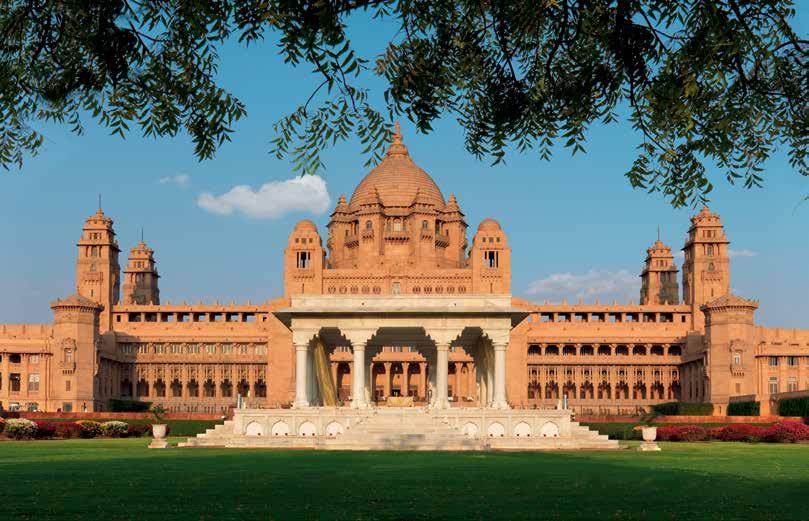
The Oberoi Vanyavilas
ranthambore national park
Our luxury tents here are reminiscent of the heyday of the Mughals and the Rajputs, when royal caravans rested under magnificent tents in the Rajasthani desert. Of course Vanyavilas’ temperature-controlled, triple-canopied, four-poster-bedded tents with elegant stand-alone baths resemble normal tents like the Vanderbilts’ Gilded Era “cottage” at Newport resembled a real cottage.
The Oberoi Vanyavilas
